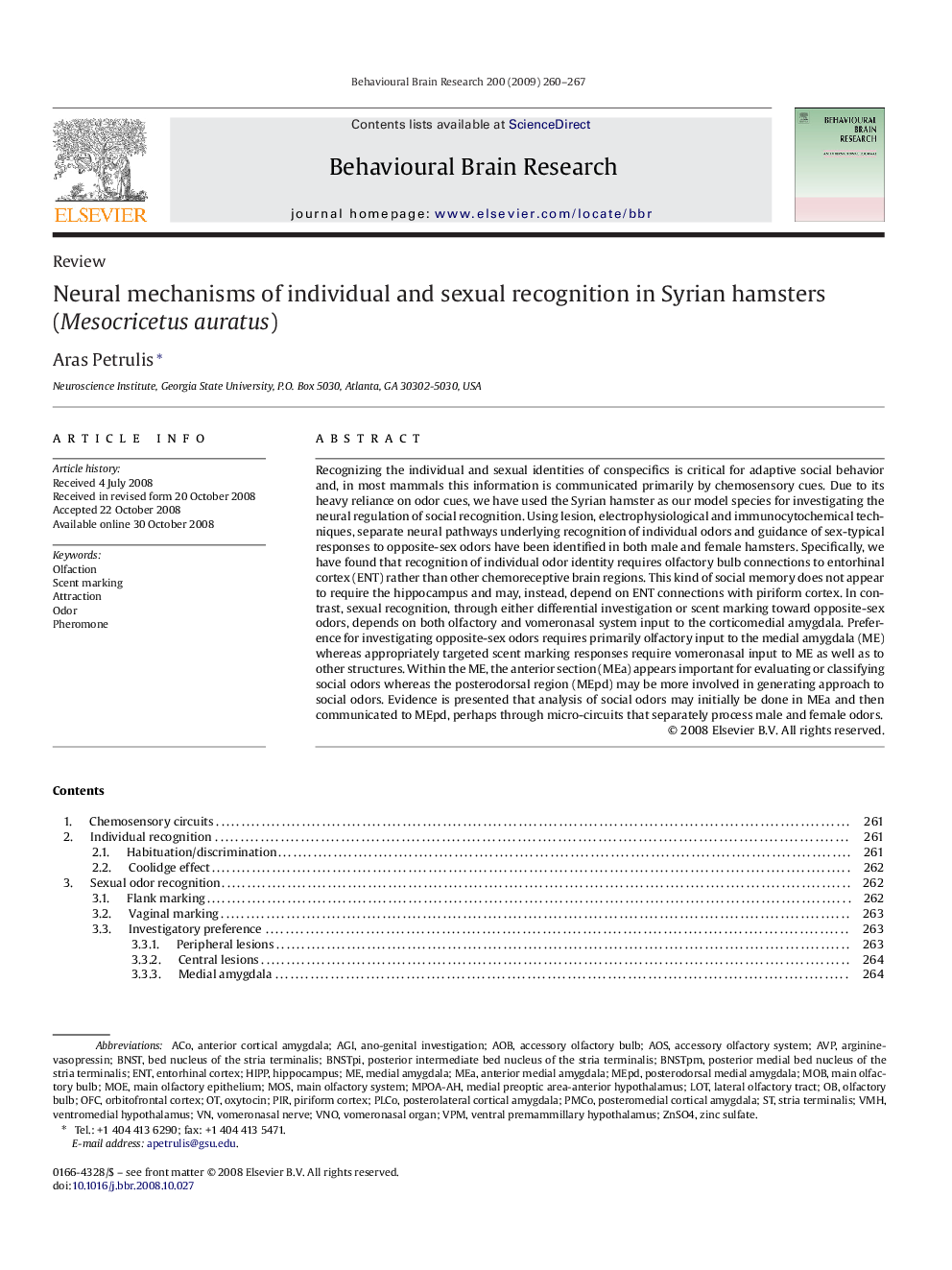| کد مقاله | کد نشریه | سال انتشار | مقاله انگلیسی | نسخه تمام متن |
|---|---|---|---|---|
| 4314762 | 1613000 | 2009 | 8 صفحه PDF | دانلود رایگان |

Recognizing the individual and sexual identities of conspecifics is critical for adaptive social behavior and, in most mammals this information is communicated primarily by chemosensory cues. Due to its heavy reliance on odor cues, we have used the Syrian hamster as our model species for investigating the neural regulation of social recognition. Using lesion, electrophysiological and immunocytochemical techniques, separate neural pathways underlying recognition of individual odors and guidance of sex-typical responses to opposite-sex odors have been identified in both male and female hamsters. Specifically, we have found that recognition of individual odor identity requires olfactory bulb connections to entorhinal cortex (ENT) rather than other chemoreceptive brain regions. This kind of social memory does not appear to require the hippocampus and may, instead, depend on ENT connections with piriform cortex. In contrast, sexual recognition, through either differential investigation or scent marking toward opposite-sex odors, depends on both olfactory and vomeronasal system input to the corticomedial amygdala. Preference for investigating opposite-sex odors requires primarily olfactory input to the medial amygdala (ME) whereas appropriately targeted scent marking responses require vomeronasal input to ME as well as to other structures. Within the ME, the anterior section (MEa) appears important for evaluating or classifying social odors whereas the posterodorsal region (MEpd) may be more involved in generating approach to social odors. Evidence is presented that analysis of social odors may initially be done in MEa and then communicated to MEpd, perhaps through micro-circuits that separately process male and female odors.
Journal: Behavioural Brain Research - Volume 200, Issue 2, 25 June 2009, Pages 260–267